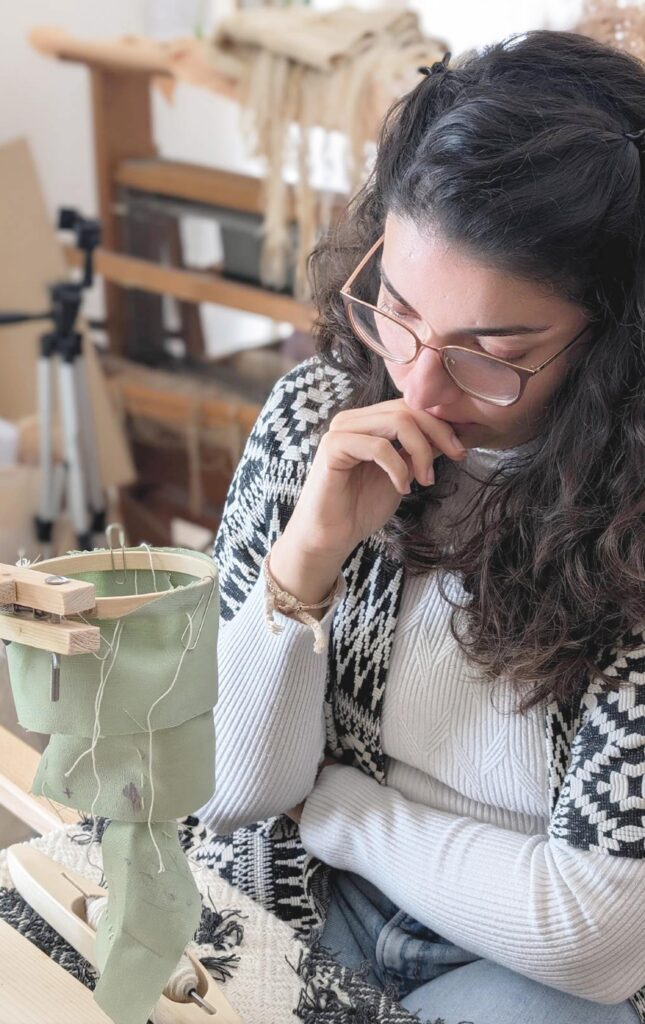

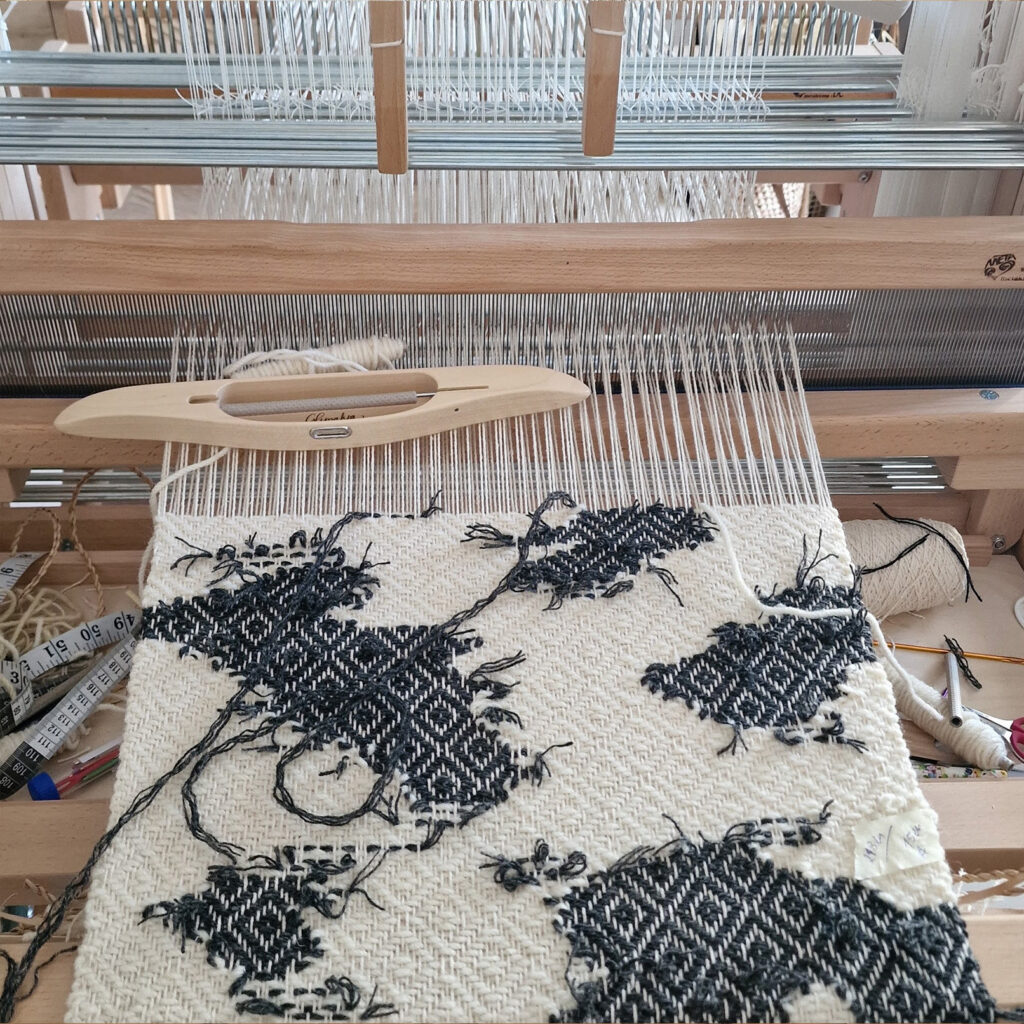
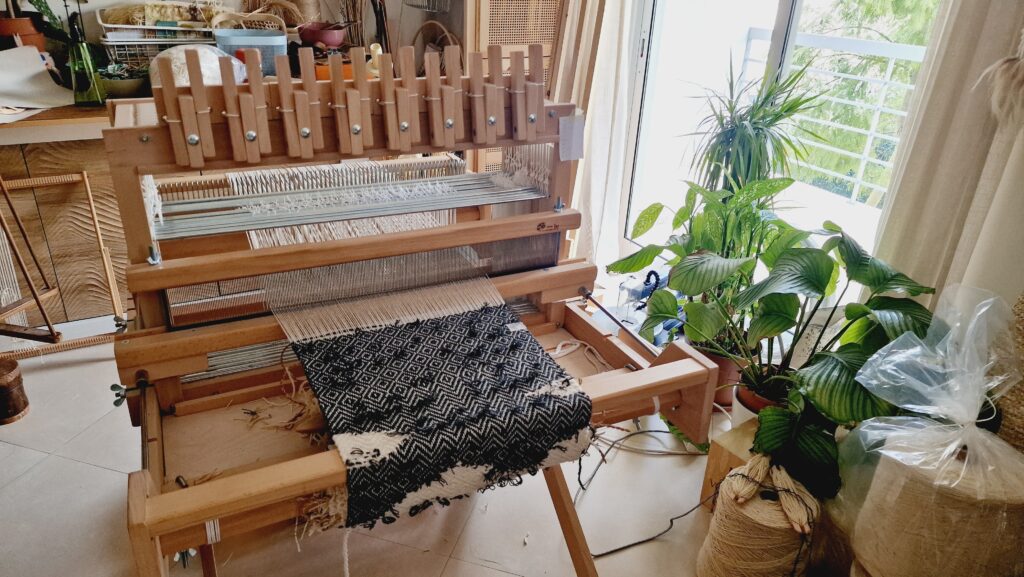
Susana Mendez.
Loulé, Portugal, 1988.
Susana Mendez a Portuguese artisan and textile artist.
Through handweaving, Susana Mendez found her own form of expression, inspired by the unpredictability of nature, its shapes and colors. Her work generally features different textures and volumes, which arouse emotions and provoke the senses.
Susana Mendez, born into a family of artisans, studied art and graduated in graphic design, an area in which she worked for several years. At the same time, she was always involved in craft and design projects. She also studied interior design, an area that has always fascinated her. She later decided to deepen her knowledge of textiles and trained in handweaving, tapestry and natural dyeing.
After finishing her textile training, Susana decided to dedicate herself entirely to handweaving with a focus on pieces for the home, both decorative and utilitarian. This is how she founded Susana Mendez – Studio in 2021.
Susana currently lives in the Algarve, the region where she was born and where she draws inspiration for her pieces. She only works with natural fibers, some of which are dyed with local plants in a natural and conscious way. Her raw material of choice is wool, a fiber that she uses both raw and hand-spun, which gives each piece a unique identity. Vegetable fibers are also a constant in her work, particularly palm leaves, as they are a reminder of a craft that runs in her family.
It’s also possible to find other textile techniques in her pieces besides handweaving, such as embroidery or manual manipulation of threads, which she introduces spontaneously.
Over time, the opportunity to disseminate her knowledge also arose, which led her to professional training. Susana is currently a trainer in handweaving and tapestry. She also takes part in meetings or creative residencies, where she exchanges knowledge and develops work with other artists or designers.
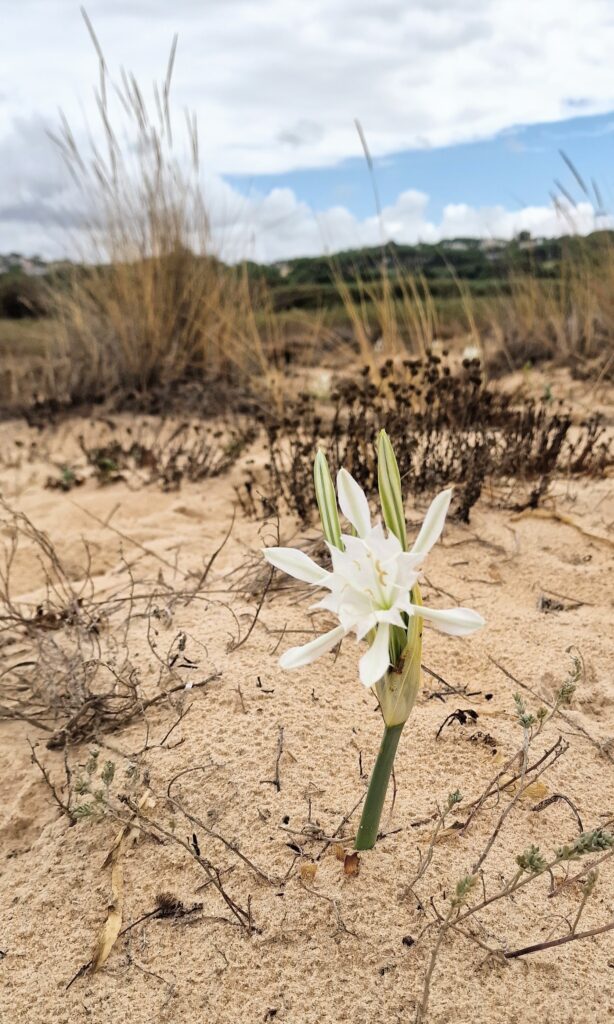
inspiration.
“I’ve always felt a very special connection with nature, perhaps because it was so present in my childhood and because it reminds me of family and happy memories. I like to be inspired by its most unusual and unpredictable details, its shapes and colors. In my work, this more organic inspiration merges with the geometric and traditional patterns that usually come off the loom and which, in a way, are also at the root of my training in graphic design.”
Susana Mendez’s pieces are an extension of nature, which she wants to bring into every home, creating unique and comfortable spaces. They often become standout pieces in the decor, due to their composition or exuberance.
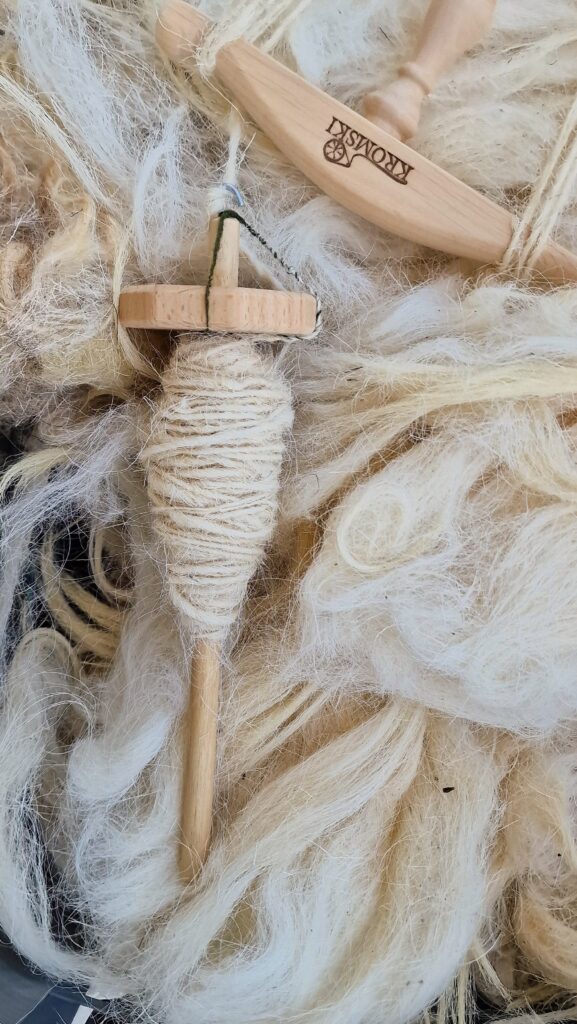
raw material.
Susana Mendez’s pieces only use natural fibers, mostly wool yarn. She works with various Portuguese wool, but especially with the wool of the Churra Algarvia sheep, a local breed that is on the verge of extinction. She has found a more decorative way of using this wool that is often discarded by producers because it has no market outlet due to its characteristics. It’s a rougher and coarser fiber, and consequently not as pleasant on the skin compared to other breeds.
“I like the personality of the Churra Algarvia sheep’s wool, it’s not easy to work with, but the end result, the texture and the touch it gives my pieces is worth the work. I use this wool both raw and hand-spun, making it an irregular yarn with lots of texture.”
Vegetable fibers can also be found in Susana’s pieces, such as cotton, linen or jute yarns. Palm leaves are also a constant in her work, as a way of using up some of the leftovers from her mother’s handicraft work.

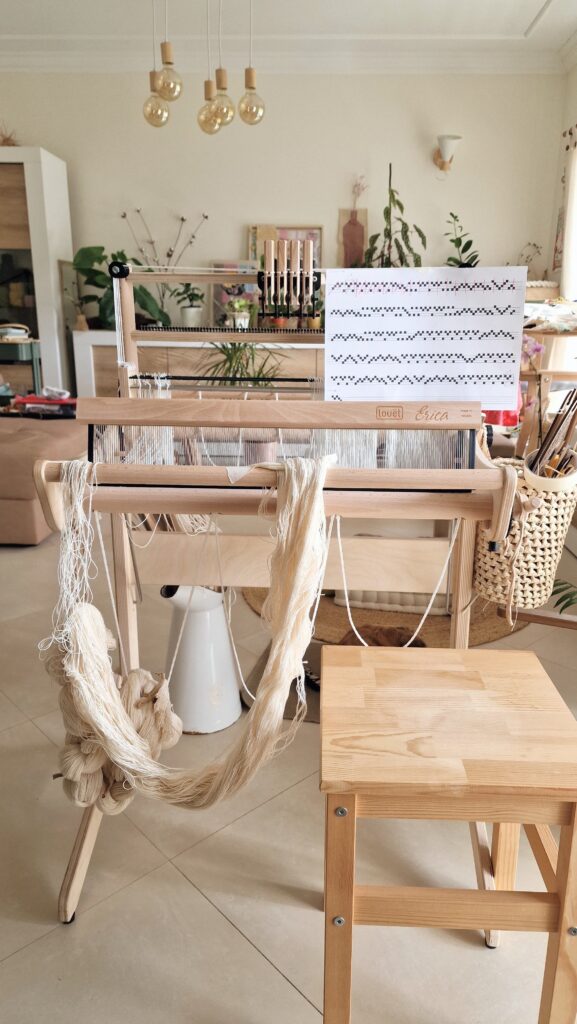
studio.
In her studio in Loulé, located in the south of Portugal, Susana Mendez weaves on her handlooms. From here she produces not only small collections of hand-woven pieces, but also personalized pieces tailored to each client.
It is also the place where the most diverse experiments in handweaving and beyond take place, with different fibers or other materials, the design of new patterns, or studies of more traditional patterns. These experiments often result in new ideas and new patterns, making it one of the most challenging and exciting phases of handweaving.
